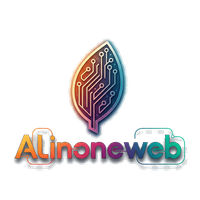Ultimate Guide to Choosing a Gamification Company in 2025 for Engagement

Understanding Gamification: What a Gamification Company Can Do for You
In today’s fast-paced digital landscape, businesses are always on the lookout for innovative ways to engage their audiences. Enter gamification: the strategic application of game-design elements in non-game contexts, and a powerful tool adopted by many organizations. As a gamification company, we specialize in turning conventional engagement strategies into dynamic experiences that motivate and inspire. Let’s delve deeper into what gamification entails and how it can dramatically reshape your business landscape.
The Essence of Gamification in Business
At its core, gamification is about tapping into the inherent motivations people experience through games. It leverages these motivations to enhance user experience and drive engagement. In a corporate context, this can mean integrating game-like features such as points, badges, and leaderboards into everyday activities. The result is a richer, more engaging environment where employees and customers alike feel more invested in the outcomes.
How Gamification Improves Learning and Engagement
Gamification has gained recognition for its profound impact on learning and engagement, particularly within educational institutions and corporate training programs. By transforming mundane tasks into enjoyable challenges, organizations can significantly improve participants’ motivation and retention rates. Research has shown that when learning materials are gamified, learners are more likely to absorb the information effectively, increasing both retention rates and learner satisfaction. For example, businesses that incorporate gamified e-learning platforms report a 50% increase in engagement levels compared to traditional training methods.
Identifying Key Elements of Effective Gamification
Not all gamification strategies are equally effective; the success of these initiatives depends on specific elements that must be present:
- Clear Objectives: To steer user behavior positively, the objectives of the gamification must be clearly defined and communicated.
- User-centric Design: Understanding the preferences and motivations of your target audience is vital to create an effective gamification strategy.
- Instant Feedback: Providing real-time feedback helps reinforce positive behaviors and encourages continuous engagement.
- Community Building: Incorporating social elements such as sharing accomplishments and competing against peers enhances the engagement factor.
Top Features to Look for in a Gamification Company
Choosing the right gamification company can significantly influence the success of your gamification efforts. Here are critical features to consider:
Innovative Tools and Technologies
This industry is continuously evolving; therefore, look for a gamification provider that uses cutting-edge technology to create an enriching experience. This could include mobile compatibility, integration with existing platforms, and analytics tools that can provide insights into user engagement and performance over time.
Customization and Scalability of Solutions
Your organization is unique; a one-size-fits-all approach will likely fall short. A competent gamification company should offer tailored solutions that can also evolve alongside your business needs. This entails developing custom features that resonate with your audience and scaling those features as your requirements grow.
Expertise in Behavioral Science Integration
Gamification is more than just implementing mechanics; it also requires a deep understanding of behavioral sciences. A company that excels in this area will know how to effectively motivate your audience through behavior change techniques that make lasting impacts. Look for companies with a proven track record in integrating behavioral science principles into their solutions.
Common Challenges in Implementing Gamification Solutions
While gamification holds great potential, organizations may encounter several challenges when implementing these solutions. Understanding these challenges is the first step toward overcoming them.
Overcoming Resistance to Change in Organizations
Change is often met with skepticism. To ease this resistance, it is essential to communicate the benefits of gamification clearly and involve team members in the design process. Involving influential stakeholders who can champion the initiative will also help in garnering support.
Measuring the Effectiveness of Gamification
Without mechanisms to measure effectiveness, assessing the impact of gamification can be challenging. Establishing clear KPIs (Key Performance Indicators) before implementation—like engagement rates, satisfaction scores, and retention metrics—can provide valuable insights and justify the investment.
Integrating Gamification into Existing Frameworks
Seamlessly integrating gamification with current processes can be daunting. A sound gamification company will be well-versed in creating strategies that complement and enhance existing systems without overcomplicating them. This may involve adapting certain systems to better accommodate gamified elements.
Successful Case Studies by Leading Gamification Companies
Seeing real-world applications of gamification can provide deeper insights into its potential benefits across various fields.
Transformative Impacts in Education Through Gamification
Educational institutions have noted significant advances in student engagement through gamified learning. For instance, a private school implemented a gamification platform that allowed students to earn rewards for each module completed. The result was a 70% increase in measurable learning outcomes within a year, illustrating the method’s effectiveness.
Corporate Training Innovations via Game Mechanics
A multinational corporation integrated gamification into its onboarding process, resulting in a 40% faster training time and increased employee satisfaction scores. The incorporation of interactive scenarios and role-playing games during training sessions kept new hires engaged and provided them with practical experiences aligned with company values and goals.
Gamification in Marketing Campaigns: Proven Strategies
Companies like Starbucks have successfully utilized gamification in marketing through loyalty programs. By awarding stars for purchases, customers are encouraged to return and engage more frequently. This approach has fostered deeper customer loyalty, leading to increased sales and repeated business.
Future Trends in Gamification: What to Expect from Gamification Companies
The gamification landscape is dynamic, and staying updated with emerging trends is vital for long-term success.
The Rise of AI-driven Gamification Solutions
Artificial Intelligence (AI) is poised to play a significant role in gamification efforts. AI algorithms can analyze user behavior more accurately than ever before, allowing for tailored experiences that adapt in real-time. This personalization not only enhances engagement but also leads to better user outcomes.
Gamification in Virtual and Augmented Reality Experiences
The integration of gamification in Virtual Reality (VR) and Augmented Reality (AR) applications is gaining momentum, especially in training and education. These immersive experiences can create engaging user environments that simulate real-world scenarios, thereby boosting engagement and retention.
New Metrics for Measuring Engagement Effectiveness
With evolving technologies, conventional metrics on engagement may become outdated. Future trends indicate a shift towards sophisticated analytical tools that provide a multi-dimensional view of user interaction, enabling businesses to refine their strategies more effectively.







